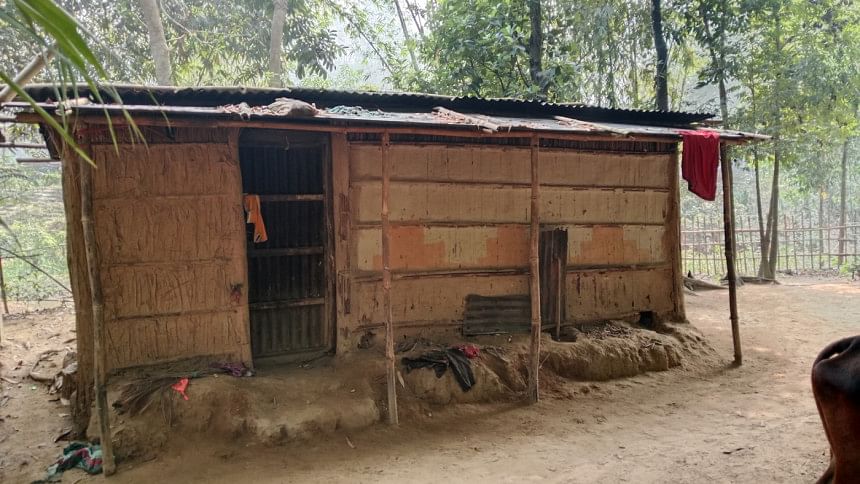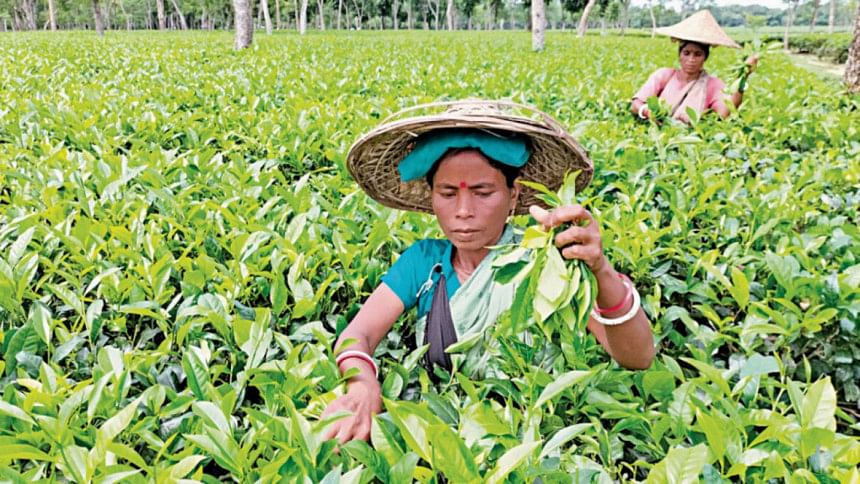World Leprosy Day: Tea workers most vulnerable

It all started when she discovered discoloured skin on different parts of her body. But for Rupom Bhumij, a 53-year-old tea worker, seeking a doctor's advice for what she thought then as a "minor issue" was a luxury she couldn't afford.
She prioritised ensuring two square meals a day for her family over seeking help. In the meantime, her condition kept deteriorating. It was only when her toe fingers stiffened she sought a doctor's diagnosis: leprosy.
"The leprosy had progressed to an ulcer on your leg," the doctor said.
Her battle extended beyond physical and financial challenges, as stigma attached to the disease ostracised her from the community.
Hope arrived in the form of HEED Bangladesh and The Leprosy Mission International Bangladesh, who now guide her through government-backed treatment.

She is not alone.
Leprosy rate is highest among tea workers of Bangladesh.
The reason? Malnutrition, unhygienic living conditions and lack of awareness, according to Moulvibazar Civil Surgeon Chowdhury Jalal Uddin Murshed.
"Leprosy is not hereditary and mildly contagious as it spreads through the air. Immediate treatment can help cure the patient," said Dr Murshed.
Skin discoloration, lumps, pimples, and thickening of earlobes are the primary symptoms of leprosy, he mentioned, adding most patients tend to ignore the signs at the initial stage fearing mental and social abuse.
"Leprosy detection programmes have been strengthened in such regions which has increased patient identification and the government is treating them for free," he added.
Philip Gain, researcher and director of Society for Environment and Human Development; and Dr Mohammad Noore Alom Shamim, assistant director (disease control) of DGHS in Sylhet, echoed him.
According to the Statistical Handbook on Bangladesh Tea Industry 2019, there are 166 gardens in the country, employing 1,40,164 workers.
There are 135 tea estates in three districts of Sylhet division, with 46,450 registered and 15,153 casual female workers, while 500,000 others are their dependents.
According to the health department, 2,959 people were diagnosed with leprosy in the Sylhet Leprosy Hospital last year.
The number was 257 in Moulvibazar district alone -- the highest in the country.
Meanwhile, 180 were diagnosed in Sylhet, 117 in Habiganj, and 103 in Sunamganj. Most patients are tea workers and their family members, especially women and children.
GM Shiblee, chairperson of Bangladesh Cha Sangsad Sylhet unit, said, "Tea estate workers are superstitious and this leads to a social stigma surrounding leprosy. Awareness must be raised in this regard as most of them take to village quacks instead of consulting doctors."
According to WHO, a country is declared "leprosy-free" if cases fall below one in every 10,000. Bangladesh made it to the list of "leprosy-free" countries in 1998 but many are still affected by the disease every year, he said.
"By the time they come to us, the disease reaches an advanced stage and has already led to disabilities. Awareness-raising is a must to curb the cases," he added.

 For all latest news, follow The Daily Star's Google News channel.
For all latest news, follow The Daily Star's Google News channel. 




Comments